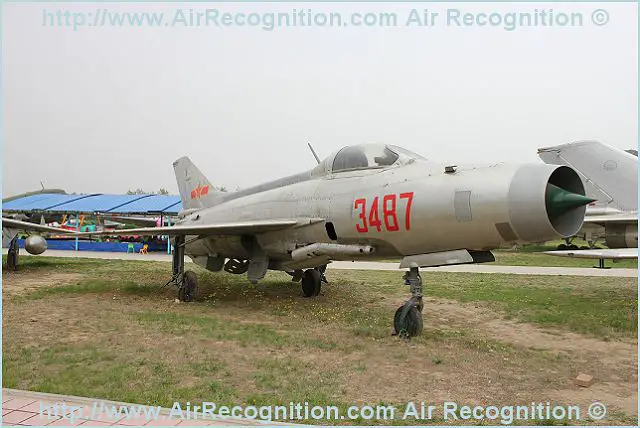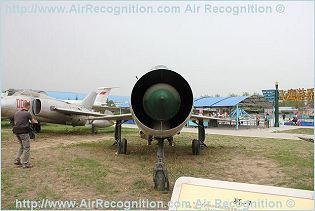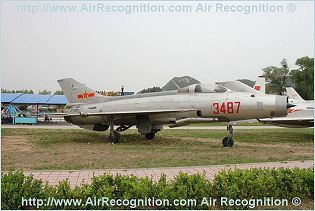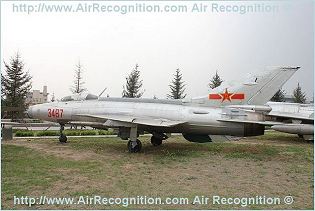J-7 F-7 Chengdu
| a | ||||||||||||||||||||||
|
J-7 F-7 Chengdu fighter / ground attack aircraft
|
||||||||||||||||||||||
|
|
||||||||||||||||||||||
|
|
||||||||||||||||||||||
|
The Chengdu Jian-7 (Export version F-7 NATO codename: Fishbed) is a People's Republic of China license built version of the Soviet Mikoyan-Gurevich MiG-21. The J-7 was designed as an interceptor fighter with secondary capability for ground attack. Over 1,000 examples in different variants have been built by three aircraft manufacturers in Shenyang, Chengdu, and Guizhou since the production first began in the late 1970s. As well as serving with the PLA, the J-7 was also exported to Albania, Bangladesh, Burma, Egypt, Iran, Iraq, North Korea, Pakistan, Sri Lanka, Sudan, Tanzania, and Zimbabwe. The J-7 is still in production today and serves in the air forces of several countries, mostly as an interceptor fighter. The latest version of the J-7 is the F-7MG which has a new wing, Western avionics and much improved weaponry. |
||||||||||||||||||||||
| Variants | ||||||||||||||||||||||
|
In an effort to meet the operational requirements of the defence forces, the CAC has developed 54 variants of the J-7. Two types of J-7 variants have been built by the company, including a domestic Chinese variant and an export variant. About 28 domestic variants and 26 export variants are in operation worldwide.
|
||||||||||||||||||||||
| Technical Data | ||||||||||||||||||||||
| Design | ||||||||||||||||||||||
|
The J-7 has been designed to perform ground attack missions in all weather conditions. The fighter has a small sized airframe with a rugged and powerful engine inside. With its delta wings the aircraft has an excellent fast-climbing performance, but any form of turning combat would led to rapid loss of speed. The pilot is buried deeply in the cockpit and has a poor cockpit visibility. The aircraft has a short range, and can only take IR-homing short-range air-to-air missiles for visual range combat, making it only suitable for point air defence.
|
||||||||||||||||||||||
| Avionic | ||||||||||||||||||||||
|
The J-7/F-7 is equipped with an efficient avionics system which includes a GEC-Marconi Avionics HUDWAC (head-up display and weapon aiming computer) plus GARMIN global positioning and bombing navigation systems. It is also equipped with a Super Skyranger radar, an FIAR Grifo-7 mkII radar (export) and a Type 226 PD radar.
|
||||||||||||||||||||||
| Propulsion | ||||||||||||||||||||||
|
The J-7/F-7 is powered by a single Liyang Wopen-13F/WP-7 turbojet engine the J-7's engine produces 44.1kN of dry thrust, while its afterburner thrust is 65.17kN. The J-7 can fly at a maximum speed of 2,120 km with a maximum ferry range of 2,000 km.
|
||||||||||||||||||||||
| Armament | ||||||||||||||||||||||
|
The J-7/F-7 is armed with two 30mm cannons, which can fire munitions at the rate of 60 rounds a minute. The aircraft has five hardpoints, four of which are located under the two wings and one beneath the centreline fuselage section. It can carry a payload of up to 2,000kg. The J-7 is fitted with PL-2, PL-5, PL-7, PL-8, PL-9, Magic R.550 and AIM-9 air-to-air missiles (AAM), unguided bombs weighing 50kg to 500kg, a 55mm rocket pod and a 90mm rocket pod.
|
||||||||||||||||||||||
| Specifications | ||||||||||||||||||||||
|
||||||||||||||||||||||
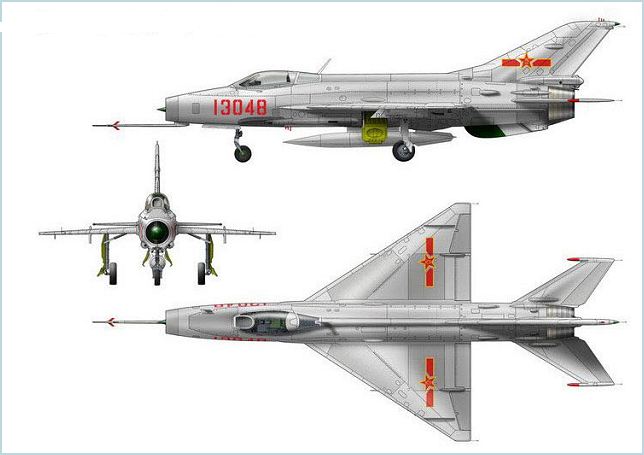 |
||||||||||||||||||||||
|
||||||||||||||||||||||



























